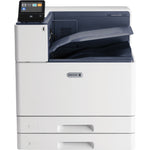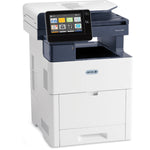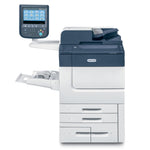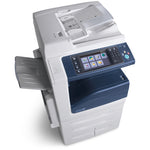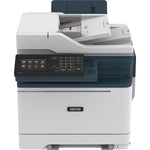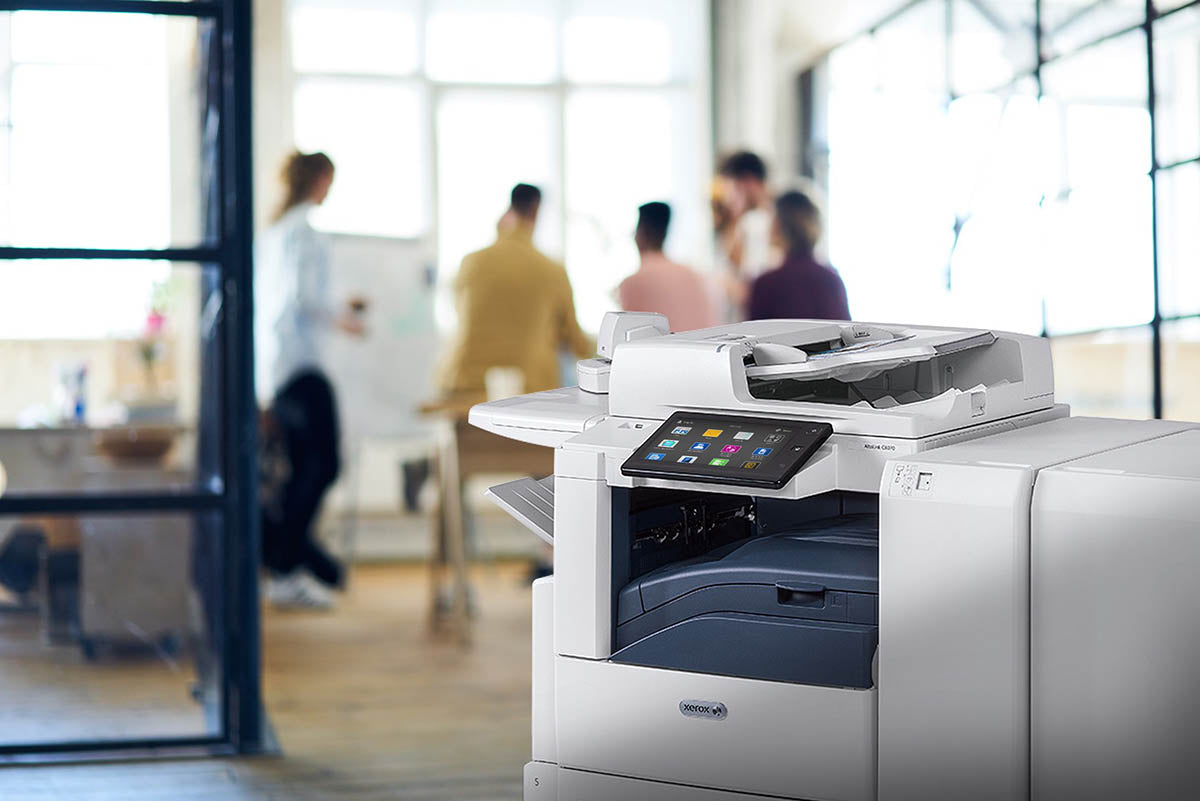If you're running a business, you know how important it is to keep your costs down. One area where you may be spending more than necessary is on printing. Whether you're printing invoices, marketing materials, or other documents, the cost of printing can add up quickly. One solution to this problem is to lease a business printer. In this article, we'll take a closer look at business printer leasing and how it can benefit your business.
Table of Contents
- What is Business Printer Leasing?
- Advantages of Business Printer Leasing
- Cost-Effective
- Up-to-Date Equipment
- Tax Benefits
- Conserves Capital
- Flexibility
- Types of Business Printer Leasing
- Operating Lease
- Capital Lease
- Fair Market Value Lease
- Factors to Consider When Leasing a Business Printer
- Volume
- Usage
- Maintenance and Repair Costs
- Lease Terms
- How to Choose the Right Business Printer Lease Provider
- Research and Compare Providers
- Look for Value-Added Services
- Check the Provider's Reputation
- Review the Lease Agreement Carefully
- Conclusion
- FAQs

What is Business Printer Leasing?
Business printer leasing is an arrangement in which a company rents a printer or copier from a leasing company for a fixed period of time, usually between one to five years. Leasing companies typically offer a variety of printer models from different manufacturers, giving businesses access to the latest technology without having to invest a significant amount of money upfront. At the end of the lease term, the business can either return the printer or copier or purchase it outright for a predetermined amount.

Advantages of Business Printer Leasing
Cost-Effective
One of the main advantages of business printer leasing is that it can be a cost-effective solution for businesses of all sizes. Leasing a printer allows businesses to spread the cost of the equipment over the lease term, making it easier to budget for printing expenses. Additionally, leasing a printer eliminates the need for a large upfront investment, which can be particularly beneficial for small businesses or startups.
Up-to-Date Equipment
Another advantage of leasing a business printer is that it provides access to the latest technology. Leasing companies typically offer a wide range of printer models from different manufacturers, allowing businesses to choose the equipment that best meets their needs. Additionally, many leasing companies offer regular equipment upgrades, ensuring that businesses always have access to up-to-date technology.
Tax Benefits
Businesses that lease a printer may be eligible for tax deductions on their lease payments. The CRA allows businesses to deduct the entire cost of lease payments as a business expense, which can result in significant tax savings.
Conserves Capital
Leasing a business printer allows businesses to conserve capital that can be used for other purposes, such as hiring new employees or investing in new products or services. By avoiding a large upfront investment in a printer or copier, businesses can preserve their cash flow and keep more money in their bank accounts.
Flexibility
Leasing a business printer offers businesses flexibility when it comes to upgrading or replacing equipment. Many leasing companies offer flexible lease terms, allowing businesses to adjust their equipment as their needs change. Additionally, leasing a printer eliminates the need for businesses to dispose of outdated equipment, which can be an expensive and time-consuming process.

Types of Business Printer Leasing
There are several types of business printer leasing arrangements available, including:
Operating Lease
An operating lease is a type of lease in which the business rents the printer for a fixed period of time, typically between one to three years. At the end of the lease term, the business can either return the printer or renew the lease for an additional period of time. This type of lease is similar to renting a printer, as the leasing company retains ownership of the equipment.
Capital Lease
A capital lease is a type of lease in which the business rents the printer for a fixed period of time, usually between three to five years. Unlike an operating lease, the business has the option to purchase the printer at the end of the lease term for a predetermined amount. This type of lease is similar to a loan, as the business has the option to own the equipment at the end of the lease term.
Fair Market Value Lease
A fair market value lease is a type of lease in which the business rents the printer for a fixed period of time, typically between one to five years. At the end of the lease term, the business has the option to purchase the printer for its fair market value, which is determined at the time of purchase. This type of lease is similar to a capital lease, but the purchase price is not predetermined.

Factors to Consider When Leasing a Business Printer
Before leasing a business printer, there are several factors that businesses should consider, including:
Volume
Businesses should consider their printing volume when choosing a printer to lease. Leasing a printer that is too small can result in increased costs due to frequent maintenance and repairs, while leasing a printer that is too large can result in wasted resources and increased expenses.
Usage
Businesses should also consider their printing needs when choosing a printer to lease. For example, if a business primarily prints black and white documents, leasing a color printer may not be necessary. Similarly, if a business requires high-quality graphics, a printer with a high resolution may be necessary.
Maintenance and Repair Costs
Businesses should also consider the maintenance and repair costs associated with leasing a printer. Some leasing companies offer maintenance and repair services as part of the lease agreement, while others require businesses to pay for these services separately.
Lease Terms
Finally, businesses should carefully review the lease terms before signing a lease agreement. Lease terms can vary significantly between leasing companies, so it's important to understand the length of the lease, the payment schedule, and any additional fees or charges.

How to Choose the Right Business Printer Lease Provider
When choosing a business printer lease provider, businesses should consider the following factors:
Research and Compare Providers
Businesses should research and compare multiple leasing companies before choosing a provider. This can help businesses find the best pricing and terms for their needs.
Look for Value-Added Services
Businesses should also look for leasing companies that offer value-added services, such as maintenance and repair, equipment upgrades, and flexible lease terms.
Check the Provider's Reputation
It's important to check the reputation of the leasing company before signing a lease agreement. Businesses can check online reviews and ratings, as well as ask for referrals from other businesses that have leased equipment from the provider.
Review the Lease Agreement Carefully
Finally, businesses should review the lease agreement carefully before signing. The agreement should clearly outline the lease terms, payment schedule, and any additional fees or charges.
Conclusion
Leasing a business printer can be a cost-effective solution for businesses of all sizes. By spreading the cost of equipment over the lease term, businesses can preserve their capital and budget for printing expenses. Additionally, leasing a printer provides access to the latest technology and offers flexibility when it comes to upgrading or replacing equipment. When choosing a business printer lease provider, businesses should carefully consider their printing needs and research multiple providers to find the best pricing and terms.
FAQs
- What is the difference between an operating lease and a capital lease?
- How can leasing a business printer help me save on taxes
- What happens at the end of a fair market value lease?
- Can I upgrade my leased printer during the lease term?
- What should I do if my leased printer requires maintenance or repair?
1. What is the difference between an operating lease and a capital lease?
- An operating lease is a type of lease in which the business rents the printer for a fixed period of time and then returns it to the leasing company at the end of the lease term. The leasing company retains ownership of the equipment, and the business typically pays lower monthly payments than with a capital lease. A capital lease, on the other hand, is a type of lease in which the business has the option to purchase the printer at the end of the lease term for a predetermined amount.
2. How can leasing a business printer help me save on taxes?
- Leasing a business printer can help businesses save on taxes by allowing them to deduct lease payments as a business expense. Additionally, leased equipment may qualify for depreciation deductions, which can further reduce the business's tax liability.
3. What happens at the end of a fair market value lease?
- At the end of a fair market value lease, the business has the option to purchase the printer for its fair market value, which is determined at the time of purchase. Alternatively, the business can choose to return the printer to the leasing company and lease a new printer.
4. Can I upgrade my leased printer during the lease term?
- Many leasing companies allow businesses to upgrade their leased equipment during the lease term. This can be a cost-effective way for businesses to access the latest technology and improve their printing capabilities.
5. What should I do if my leased printer requires maintenance or repair?
- If a leased printer requires maintenance or repair, the business should contact the leasing company to request service. Some leasing companies include maintenance and repair services as part of the lease agreement, while others require businesses to pay for these services separately. It's important to review the lease agreement carefully to understand the maintenance and repair provisions.






